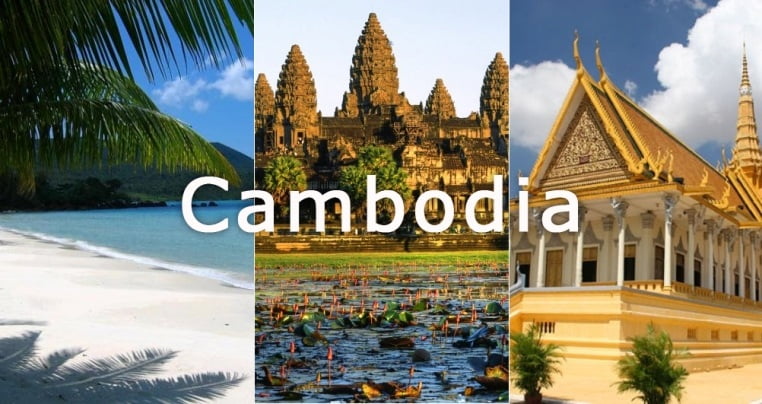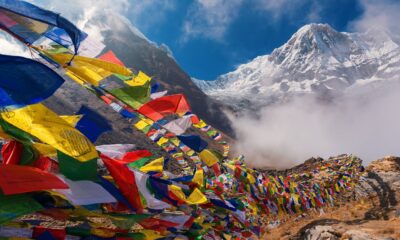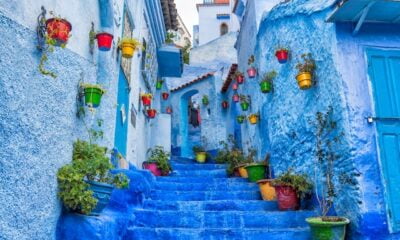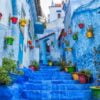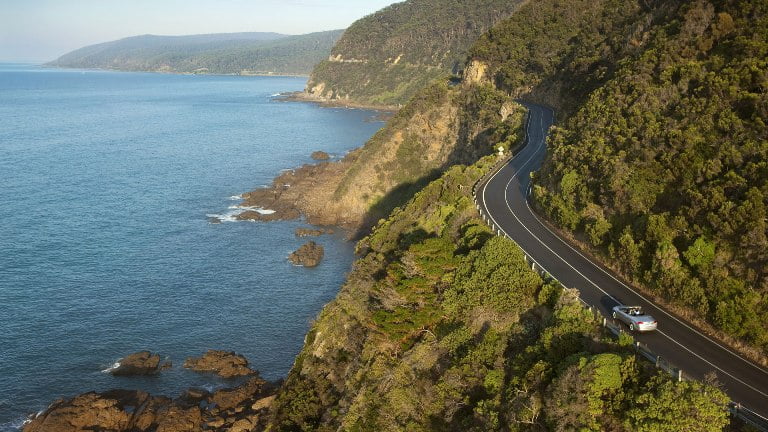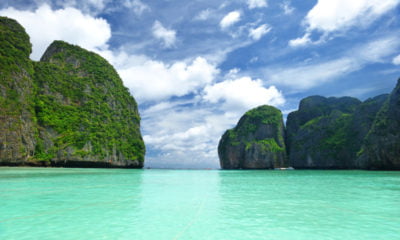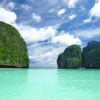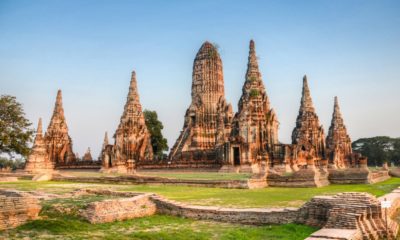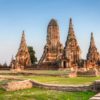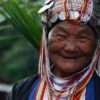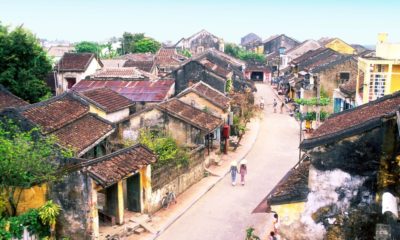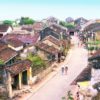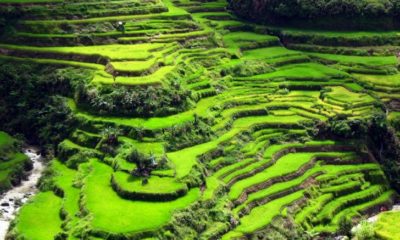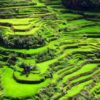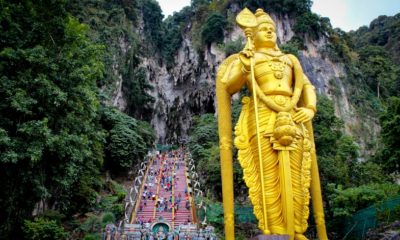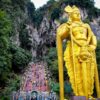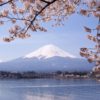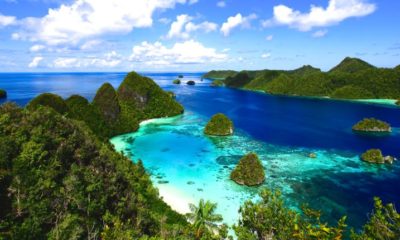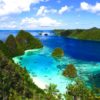Cambodia Backpacking Guide
Cambodia is usually only associated with two things; the enchanting temples of Angkor Wat, and the brutal, former Khmer Rouge regime, which together work as draws and deterrents for tourists.
Cambodia is usually only associated with two things; the enchanting temples of Angkor Wat, and the brutal, former Khmer Rouge regime, which together work as draws and deterrents for tourists. Nevertheless Cambodia is a country on the up and becoming more and more popular with backpackers, offering fantastic beaches, charming culture and delightful people.
Go To Cambodia For…
Angkor Wat

Monks in front of Angkor Wat
Undoubtedly the biggest draw to Cambodia is the magnificent Angkor Wat – the largest religious monument in the world. I don’t think I’ve met anyone that has been to Cambodia and not visited Angkor Wat.
Beaches
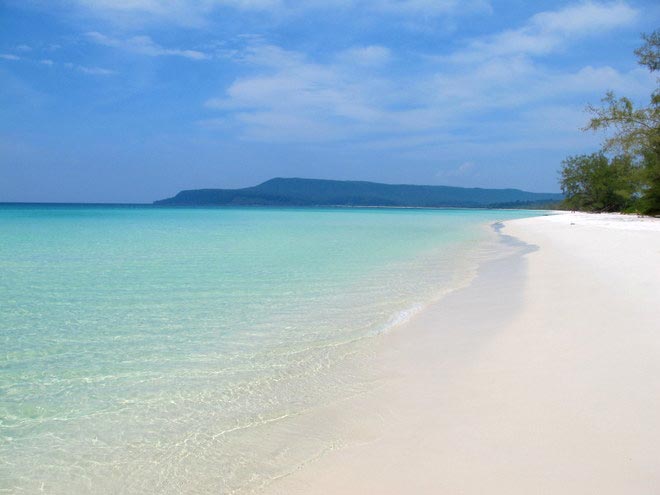
Long Beach, Koh Rong
Cambodia has some fantastic beaches, far less crowded than those in Thailand, with many uninhabited tropical islands. The beaches provide great sea food restaurants and a happening night scene.
History
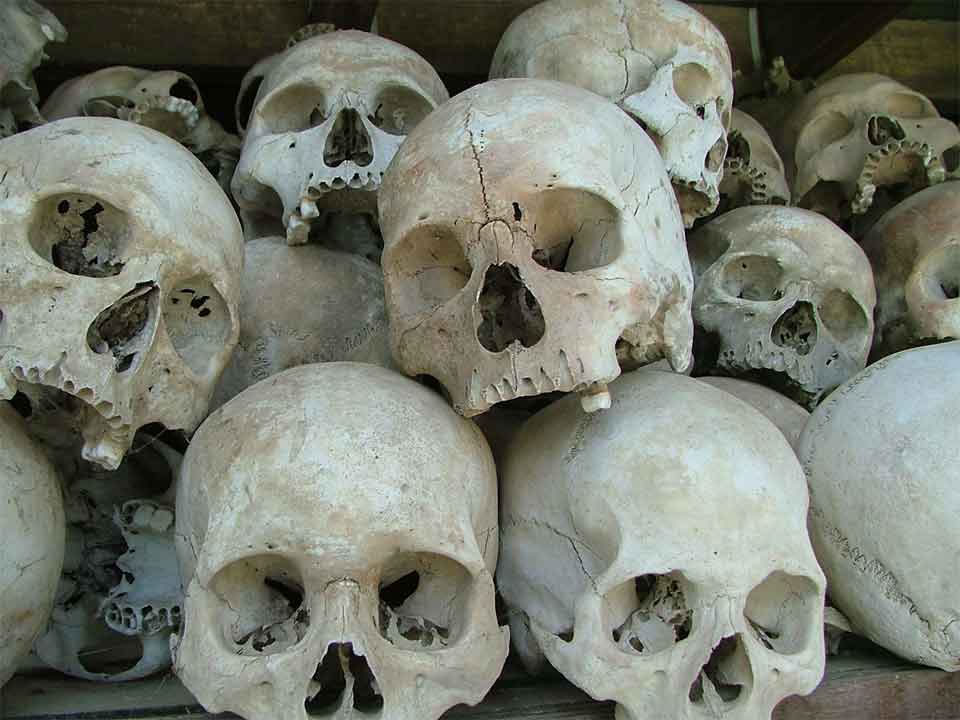
Skulls of victims of the Khmer Rouge, Choeung Ek
The horrors of the Khmer Rouge are traumatic and reminders are all around you. However you won’t fail to be inspired with just how far the country has come along in such a short space of time.
People
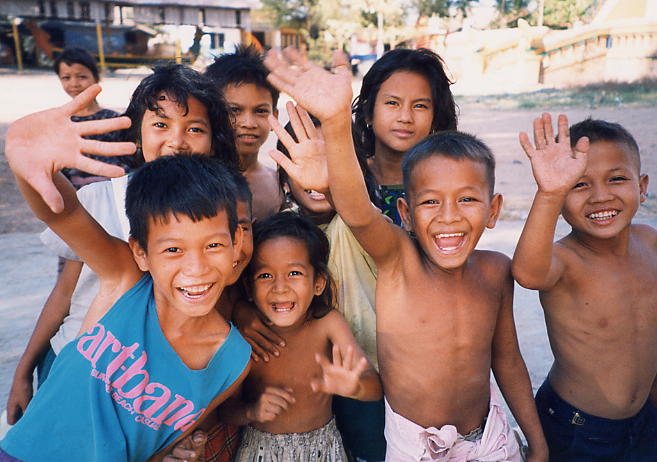
Cambodian children are notoriously friendly
The people of Cambodia are some of the friendliest you are ever likely to meet, with an unbreakable spirit and infectious optimism.
Consider Going Elsewhere If You…
Don’t Like Being Pestered
In Cambodia everyone is trying to sell you something, including the kids. You can even struggle to cross the road without being offered a product, service or scam.
Worry About Safety And Security
While the vast majority of visits to Cambodia are trouble free, there are more concerns to your health, safety and security than when in other South East Asian countries. Read below for Dangers and Considerations when travelling in Cambodia.
Top Places To Visit In Cambodia
Angkor Wat
An iconic and absolutely magical place, it fills your soul with positive energy and serenity.
You may even feel a bit like Indian Jones or Lara Croft as you walk around the many temple ruins.
Cambodia Need To Know
Basics
|
|
Entry
All visitors, except citizens of Indonesia, Malaysia, Singapore, Philippines, Laos, Thailand and Vietnam need a visa to enter Cambodia.
You can get a visa on arrival at most ports of entry, payment is in $US only and you will need to bring 2 passport photos. Visas can also be obtained before arrival at Cambodian embassies or consulates.
A tourist visa costs US$20 (subject to change) for 1 month and can be extended for 1 extra month.
Your passport should be valid for a minimum period of 6 months from the date of entry into Cambodia. Entry is normally refused if you have a damaged passport or pages missing.
Make sure your passport is stamped on arrival. You can be fined, detained and deported if you overstay your visa.
In order to leave Cambodia you will require an exit visa, this will be given to you on entry to the country. If you lose your exit visa or passport with the visa inside you will need to obtain a new exit visa at a cost of $40.
Yellow fever vaccination is required for travellers arriving from countries with risk of yellow fever transmission.
For official visa information visit immigration.interior.gov.kh
Getting Around
Long journeys in Cambodia are usually taken by bus, pickup truck or shared taxi.
Bus travel is cheap, with journeys from Phnom Penh to Siem Reap or Sihanoukville costing around US$5.
Always go by the meter when taking taxis – if the driver claims the meter is broken, get out and find another taxi. Always negotiate the price of a tuk-tuk or songthaew to avoid being ripped off.
The quality of roads are improving all the time in Cambodia and the borders, coast and major cities are all well connected.
You will need a Cambodian driving licence to drive a vehicle, including a motorcycle and you will need to apply for a Cambodian licence for around US$32.
Boats are a popular form of transport between Phnom Penh and Siem Reap; and Siem Reap and Battambang. Going by boat is generally slower than by road, but offers a spectacular view of rural life along the Tonle Sap river.
Read more about Getting Around When You Get There here
Accommodation
Cambodia has a wide variety of hostels, budget guesthouses and mid-range hotels in major towns and tourist destinations. Off the beaten track or in rural areas you will be limited to very basic hotels or homestays.
Accommodation is cheap, between US$2-10 per night. At the budget end you may have to provide your own towel and linen, and pay extra for things like hot water.
Read more about Accommodation When You Get There here
Food And Health
Restaurants are cheap and cooking facilities in hostels are extremely rare.
Food hygiene and safety is improving, but isn’t up to Western standards. Use your instincts; if the place looks dirty, don’t eat there; if your food isn’t piping hot, don’t eat it.
Water is not safe to drink – always buy bottled or boil.
Public health facilities in Cambodia are very poor. Private clinics and hospitals in Phnom Penh are often better equipped, but are of variable quality and can be expensive. If you have a serious health problem it would be best to head to Bangkok in neighbouring Thailand.
Make sure you have adequate travel health insurance and accessible funds to cover the cost of any medical treatment abroad and repatriation.
Cambodia does not have the same health and safety standards as the west. Be aware that safety advice will be minimal and there may not be warning signs at tourist sites.
Dengue Fever and Malaria are present in Cambodia. Always contact your GP around 8 weeks before your trip to check whether you need any vaccinations or other preventive measures. Visit here for recommended vaccinations.
Weather & Time To Go
Cambodia is hot, humid and wet throughout the year. The best time to visit is between November and February. This is the coolest and driest time of year.
Between March and May it can get extremely hot and sticky, temperatures rarely dropping below 35°C in the day.
Heavy storms during the monsoon season (May to October) can cause disruption and damage including flooding and landslides. Travel to some provinces can be seriously disrupted during this time.
Poor drainage leads to flooded roads in monsoon season, causing major traffic congestion in Phnom Penh, allow additional travel time if you’re heading to the airport.
Communications
There is good internet, wifi and mobile phone coverage in the main cities and towns of Cambodia, but many of the islands and remote areas are not covered.
Dangers And Considerations
Travel bureaus advise against crossing the border near the Preah Vihear temple (Khaoi Pra Viharn in Thai) as it disputed by Cambodia and Thailand, and there have been occasional clashes between Thai and Cambodian troops in the area. Disputes also exist over control of the Ta Moan and Ta Krabey temples, which lie close to the Thailand-Cambodia border. Be alert to the local security situation in border regions and at land crossings between countries. Seek local advice before you set off. At the more remote crossing points, conditions can be basic. Some visitors have reported local officials at land borders asking for unofficial fees or inflating visa prices.
There have also been reports of police charging fees for some services, including issuing police reports. Issuing a police report for crimes should not carry a fee. If you suspect an inappropriate fee is being demanded from you, report the matter to your Embassy.
Cambodia remains heavily affected by landmines and unexploded ordnance. Mined areas are often unmarked. Don’t stray off main routes in rural areas, including around temple complexes and don’t pick up metal objects.
Petty crimes against tourists is common. Hotspots include the riverfront and BKK areas of Phnom Penh, and the beaches and tourist areas of Sihanoukville.
Be wary of pickpockets and bag snatchers. Items are often snatched by thieves on motorbikes when walking along busy streets or travelling in open transport like tuk tuks. If you travel by bus, make sure cash and valuables you have are kept securely, especially if you intend on sleeping.
Local law enforcement responses to crimes, even violent crimes, are often limited.
Cases of drink spiking are on the rise in Sihanoukville, so take care at night or whilst intoxicated.
Political protests are common, you should avoid all public gatherings and mass demonstrations, as they can sometimes turn violent. Also do not express strong opinions on Cambodian politics or culture.
Cambodia has one of the highest rates of road traffic accidents in the region. There are high numbers of fatalities and serious injuries. Taxi drivers will drive very fast, and bus drivers are often untrained or even drunk. If you have any doubts it is best to either ask to get off, or not get on in the first place.
Penalties for possession, distribution or manufacture of drugs are severe. Prison sentences can be long and served in poor conditions. Drugs have also caused of a number of deaths in Cambodia due to their high purity, as well as often being cut with other substances.
Cambodians are friendly, but you should be wary if a Cambodian befriends you quickly and invites you to their home or hotel on the pretext of meeting their family. There have been reports of people becoming the victim of a poker scam and then threatened at knife-point to withdraw money at an ATM.
Jellyfish can swim close to the shore, particularly during the rainy season. Their sting can be fatal. If in doubt take local advice from hotel management and dive centres.
When undertaking any activity always try to use a reputable organisation, as safety guidelines and regulations are not to Western standards. If in any doubt about safety, do not do it.
Local pharmacies provide a limited supply of medications. Some may sell counterfeit products. Make sure you bring adequate supplies for the duration of your stay.
Dangers constantly change. Always check with your foreign office (British Foreign Office webpage) or travel advice bureau for the latest information regarding your destinations safety.
Read more about Safety And Security here
Respecting Culture
Ask permission before taking pictures of people, especially monks and other religious figures.
When entering religious and cultural sites it is a courtesy to dress in appropriate clothing. You are expected to remove your shoes when entering temples and private accommodation.
Dress for women is more conservative in Cambodia than other South East Asian countries. While shorts are acceptable in Phnom Penh, Siem Reap and tourist beach towns, it is more respectful to wear knee length shorts or trousers when outside of these areas.
The Khmer Rouge is a very sensitive issue, and one which Cambodians generally prefer not to talk about.


